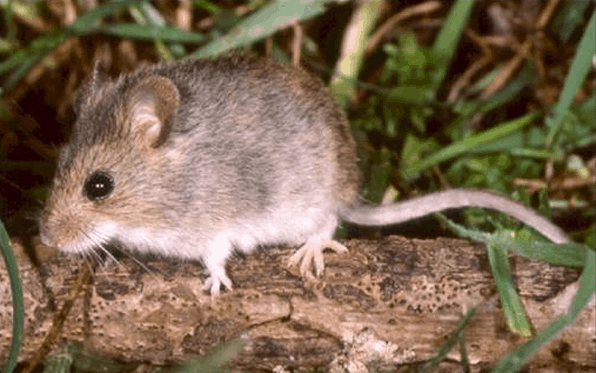By Gig Conaughton, County of San Diego Communications Office
Five mice trapped in routine monitoring in southeastern, north central and north areas of the county have tested positive for hantavirus, marking the first appearance of the potentially deadly virus in San Diego County in 2019.
San Diego County Vector Control officials reminded people Thursday that they should always protect themselves if they find wild rodents, the main carriers of hantavirus, living in their homes, sheds and garages.
Officials said people can do that by remembering to never sweep or vacuum rodent nests or droppings. Instead they should use “wet cleaning” methods if they must clean up after rodents to keep hantavirus from being stirred into the air where it can be inhaled.
The five rodents that tested positive included one cactus mouse and one western harvest mouse trapped in the Bonsall area, two western harvest mice trapped in the 4S Ranch area, and one California mouse trapped in the Potrero area.
Vector Control officials said hantavirus is not uncommon in San Diego County and can be found in nearly any area here where there is undeveloped land. Because of that, they said it is not unusual for wild mice from several areas to test positive. However, Vector Control officials also said it’s unlikely for people to come into contact with hantavirus because wild mice typically live in undeveloped areas and do not usually live in the same spaces with people.
Infected rodents shed hantavirus through their saliva, urine and feces. When that matter dries, it—and the virus—can be stirred into the air and breathed in.
Hantavirus can cause deadly infections in people and there is no vaccine or cure. However, people have little chance of being exposed to hantavirus if they keep wild rodents out of their homes and workplaces.
Here are some tips to prevent being exposed to hantavirus and how to use “wet cleaning” methods.
Avoid Exposure to Hantavirus
•Seal up all external holes in homes, garages and sheds larger than a dime to keep rodents from getting in.
•Eliminate rodent infestations immediately.
•Avoid rodent-infested areas and do not stir up dust or materials that may be contaminated with rodent droppings and urine.
•Clean up rodent droppings and urine using the wet cleaning method described below.
Use “Wet-cleaning” Methods to Prevent Inhaling the Virus
•Do not sweep or vacuum infested areas.
•Ventilate affected area by opening doors and windows for at least 30 minutes.
•Use rubber gloves. Spray a 10 percent bleach solution or other disinfectants onto dead rodents, rodent droppings, nests, contaminated traps, and surrounding areas and let the disinfectant stand for at least 15 minutes before cleaning.
•Clean with a sponge or a mop.
•Place disinfected rodents and debris into two plastic bags, seal them and discard in the trash.
•Wash gloves in a bleach solution, then soap and water, and dispose of them using the same double-bag method.
•Thoroughly wash your hands with soap and water.
For more information, contact the County Department of Environmental Health (DEH) at (858) 694-2888 or visit the DEH hantavirus web page.
Gig Conaughton is a communications specialist with the County of San Diego Communications Office.



















